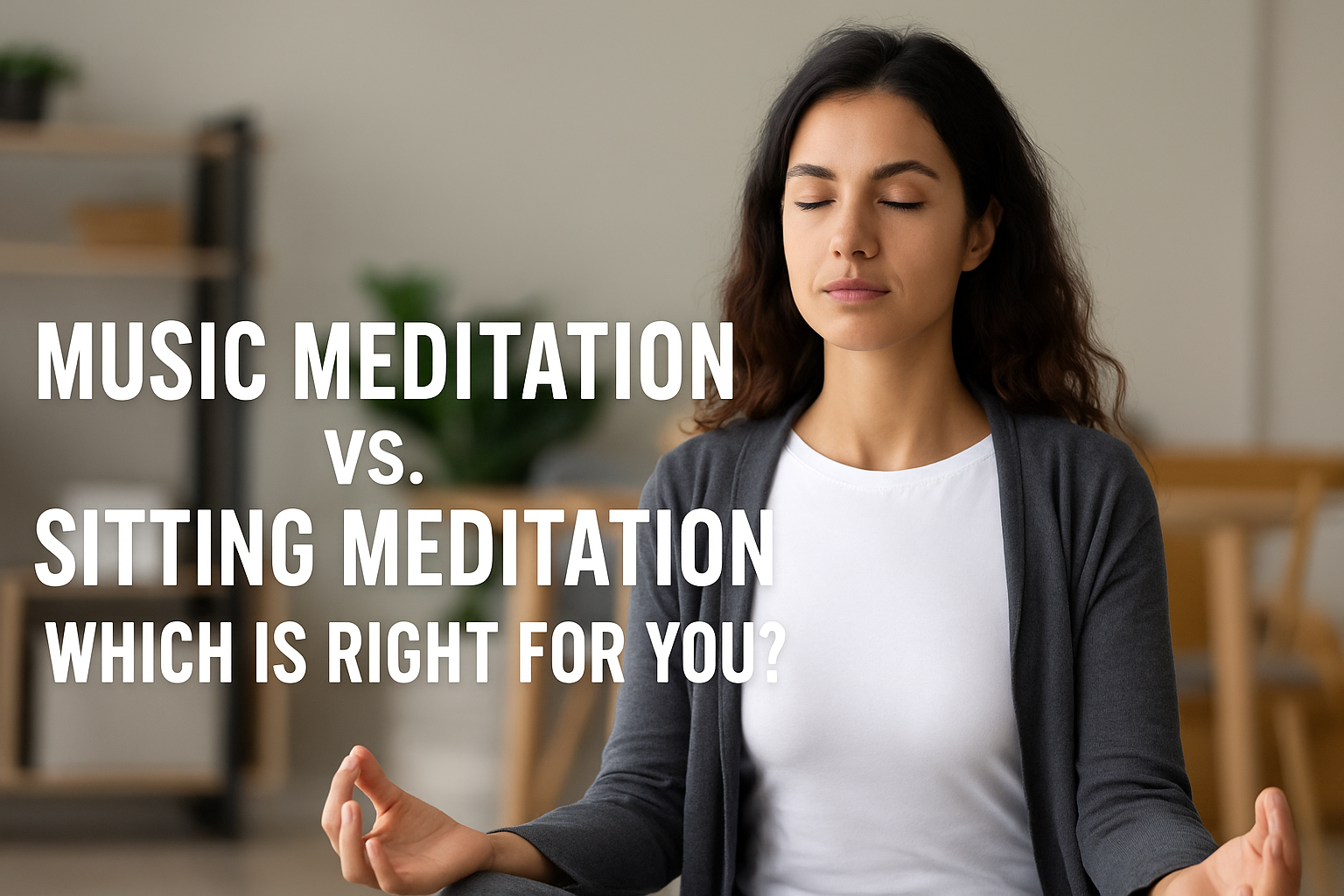Music Meditation vs. Sitting Meditation: Which Is Right for You?
Explore Two Powerful Paths to Inner Stillness
Struggling to Quiet Your Mind?
If you’ve ever tried to meditate and found yourself distracted, uncomfortable, or unsure whether you’re “doing it right,” you’re not alone. Many people begin a meditation journey with good intentions, only to get stuck in silence or overwhelmed by racing thoughts.
This is where the style of meditation matters. Some find deep peace in silence, while others discover flow through sound. So how do you choose? That’s what we’ll explore today in Music Meditation vs. Sitting Meditation: Which is right for you?
Both offer unique benefits — and understanding their differences can help you find the practice that resonates with you best.
—
What Is Sitting Meditation?
The Practice
Sitting meditation, also known as silent or still meditation, involves sitting quietly — usually with closed eyes — and focusing your attention inward. This might involve breath awareness, body scanning, or simply observing your thoughts without judgment.
The Benefits
- Develops mental clarity and presence
- Enhances self-awareness and emotional regulation
- Strengthens your ability to sit with discomfort or distraction
Is It Right for You?
Sitting meditation is ideal if you prefer a minimal, distraction-free space. It offers a pure, stripped-back experience — but it can feel challenging at first, especially if your mind is very active or your environment is noisy.
—
What Is Music Meditation?
The Practice
Music meditation involves listening to soothing or ambient music while meditating. You can sit or lie down, and allow the sounds to guide your breath, awareness, and emotional state. Some people also use specific soundtracks, binaural beats, or nature sounds to enhance the experience.
The Benefits
- Helps quiet the mind by providing a gentle focus
- Creates a calming emotional atmosphere
- Accessible for beginners or those sensitive to silence
Is It Right for You?
If you find silence intimidating or your thoughts too loud, music meditation may offer a softer entry point into mindfulness. It’s also helpful when you need emotional comfort or a quick mental reset.
—
Key Differences at a Glance
| Sitting Meditation | Music Meditation | |
|---|---|---|
| Environment | Quiet, minimal | Soothing music or soundscapes |
| Focus Style | Internal (breath, body, thoughts) | External (music) + internal awareness |
| Difficulty Level | Can be harder for beginners | Generally more accessible |
—
Can You Combine the Two?
Absolutely. Many people use music to ease into meditation, then remove it once they’ve settled. Others alternate styles depending on their mood or energy. There are no strict rules — just what supports your practice.
You might try:
- Starting with soft music, then transitioning to silence
- Using sound only on particularly stressful days
- Creating your own ritual that blends both methods
—
Conclusion: Choose What Feels Supportive
There’s no one “right” way to meditate — only what works for you. Whether you find comfort in silence or grounding in sound, the key is consistency and kindness to yourself as you explore.
You don’t need to force your mind to be quiet — you just need to give it space to settle, in whatever form that takes.
✨ Ready to explore more? Try both meditation styles this week and notice which helps you feel more centered. Subscribe for weekly guides, calming practices, and soundscapes to support your journey inward.

Leave a Reply